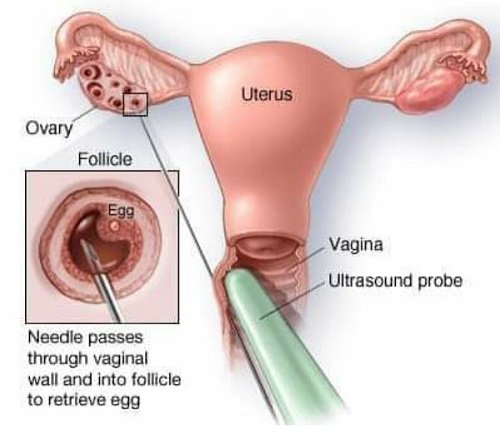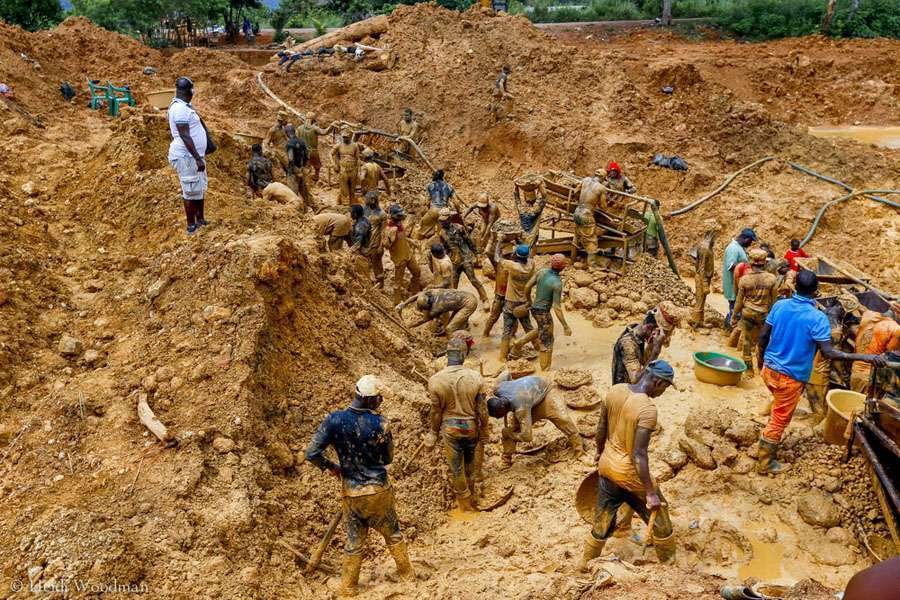Nutrition
Solving infertility issues: Women selling their eggs for quick money?

The thought of a woman to sell her eggs because of financial challenges may seem too easy a way to make money.
The motivation to do this could be stronger because after all, the eggs are “wasted” every month in a woman who has no plans to conceive and so what is the farce about making some cash out of them.
Currently, there are women or couples who are willing to pay substantial sum of money as compensation to women willing to donate their eggs, and the financial reward offered to an egg donor may often be bait many potential donors cannot resist.
This results in their participation in the egg donation process, oblivious of the risks relative to their health and safety, including loss of fertility and sometimes the death of the donor.
According to a Specialist Obstetrician Gynaecologist with the Women’s Health Obstetrics and Gynaecology, Dr Dixie Constantini, in an interview with The Spectator last Friday, said egg donation, medically, was the process by which a woman was given medication to stimulate ovulation and her eggs harvested.
She explained that the choice by a woman to be a recipient of a donor egg generally fell into three categories.
She said that the first were women who were unable to produce viable eggs of their own. The second category included women above the age of 40 opting for assisted reproduction, and the third comprised women who had genetic conditions and wished not to pass on to their children, or who had multiple pregnancy failures which could not be medically explained.
The Obstetrician Gynaecologist said in some cases, the recipient might be a surrogate mother who had offered to carry the baby on behalf of another person or family.
“The recipient could also choose to carry the baby by herself after the donated egg has been fertilised by the semen of her partner. This usually happens when she intends to keep the baby and wants to experience pregnancy on her own” she explained.
She said each month women who had reached puberty and had not gone past menopause released egg from their ovaries, and on rare occasions released two.
“The egg if healthy can be fertilised by an equally healthy sperm. The union of egg and sperm is termed as fertilisation and this is key to any pregnancy occurring. The womb of a woman has a special lining that can increase and decrease in thickness in response to signals received from the body,” DrConstantini said.
She said that while some women donated their eggs purely for monetary benefit, a few others were motivated by altruism.
She said the collected eggs were stored and could be used by other women for the purposes of having a baby by a process known as assisted reproduction.
“Healthy Women between the ages of 18 and 32 are usually considered suitable candidates for egg donation. This criterion is, however, country-specific. A limit to the number of times an individual can donate eggs exists. These limits, set by health authorities of various countries, are intended primarily to safeguard the health of the donor” she said.
She said in some countries the upper limit for donations by an individual was six during their lifetime, however, in other jurisdictions, the upper limit was 10 donations per individual during their lifetime.
DrConstantini cautioned women who wished to donate eggs to be well informed and also go to trusted heath facilities.
“Not all monies are worth it,” she cautioned, as she explained that a person could have fertility problems later in life or even lose her life during egg retrieval if not done well.
She said, it was important that before a person made the decision to become an egg donor, she should know that as much as the process could be complication free, the hormones given before this procedure could have side effects including headaches or bloating.
The Specialist Obstetrician Gynaecologist said the hormones could also come with side effects such as mood changes , extreme enlargement of ovaries, fluid filling the lungs and abdomen of the donor, increased blood clot formation and having a stroke.
She, therefore, advised women to make sure they are thoroughly informed of the risks that come with the procedure,s as they can encounter post procedure and think seriously about the decision to donate egg before they agree to go ahead with signing consent forms to undergo a procedure as such”.
Meanwhile, in an interview with some members of the public in reaction to a question as to whether they would be willing to do an egg donation or be a recipient, there were divergent views.
A student of a public university who spoke on condition of anonymity said she would like to donate her eggs because she was not ready to get married now and felt instead of losing them every month, she would rather give to someone who was desperate.
“I see nothing wrong with it. I feel it is just like donating blood to someone who is in dire need of it. The person will be eternally grateful to you and even bless you. I would like to do it for free than sell it. It would make me feel better “ she said.
“Under this economy I wouldn’t mind selling my eggs. I will make good money and I don’t think this is a crime or sin” a trader also said.
A 40-yea-old nurse said if she had found herself desperate to have a child as a younger person, she would have gladly gone for the option of being a recipient of another person’s egg.
She was, however, concerned that there was not “straight forward “ laws in the country regulating the practice and so might give room to abuse by young girls or women which would and compromise their health.
From DzifaTettehTay, Tema.
Nutrition
Galamsey and Nutrition: Counting the real cost of Ghana’s gold rush

Illegal small-scale mining, or galamsey, has been branded as one of Ghana’s gravest environmental and economic threats. Successive governments have promised action, task forces have been deployed, and billions of cedis lost in revenue have been reported. Yet a deeper crisis is unfolding beneath the surface: a nutrition emergency directly linked to the destruction caused by galamsey.
Across mining belts in the Western, Ashanti, and Eastern regions, rivers that once sustained farming and fishing are contaminated with mercury and cyanide. Farmers say irrigation is impossible; fishermen say their nets return empty. Independent studies confirm that mercury levels in some rivers exceed World Health Organisation guidelines. The result is a sharp reduction in safe food production and an erosion of the very foundation of Ghana’s nutritional security.
The figures are sobering. Nationally, one in five children under five is stunted. Nearly half of women of reproductive age are anaemic. Child wasting remains at emergency levels in some districts. The destruction of fertile land and poisoning of water through galamsey only compound these problems. In some mining-affected districts, local health authorities report higher rates of undernutrition and anaemia than the national average.
Economists estimate that malnutrition already costs Ghana up to 6.4 per cent of its GDP each year in lost productivity, poor educational outcomes, and higher health expenditures. With agriculture compromised by galamsey, the bill is rising. Food inflation is being felt in urban markets, while rural households in mining areas are forced to survive on monotonous diets that lack the nutrients needed for growth and development.
The accountability gap is glaring. Ghana committed at the 2025 Nutrition for Growth Summit to invest $6 million annually in nutrition. Yet the same state resources continue to be drained by environmental damage, water treatment costs, and agricultural losses linked to galamsey. While authorities launch operations against illegal miners, enforcement remains inconsistent and politically fraught, raising questions about who benefits from the destruction.
Experts warn that without decisive action, galamsey will derail Ghana’s progress toward the Sustainable Development Goals, particularly those on zero hunger, good health, and climate action. “Every river poisoned is a food system destroyed, and Ghana cannot achieve food security while watching our land vanish,” says Dr Charity Binka, Executive Director, WOMEC.
The evidence is clear: galamsey is not just an environmental crime. It is a public health emergency and a development crisis. Addressing it requires more than rhetoric; it requires enforcement, transparency, and the political will to confront vested interests. Unless this happens, Ghana risks trading its children’s nutrition and future productivity for short-term gains in gold.
We therefore demand the activation of permanent inter-agency galamsey response teams with prosecutorial authority independent of political interference and the establishment of a Galamsey Restoration Fund financed through penalties for river remediation and emergency nutrition interventions. We also call for the publication of quarterly malnutrition data disaggregated by mining-affected districts.
We join the call for amendments to the Minerals and Mining Act with a focus on mandating nutrition impact assessments with automatic permit suspension for violations, the resourcing of community water monitoring committees with testing kits, and the invitation of UN Special Rapporteurs to assess affected regions and provide independent recommendations.
We urge every citizen to demand that their MP publicly declare their enforcement plan and support stronger penalties, because the evidence is overwhelming and the solutions are known. Ghana’s rivers, farmlands, and children cannot wait for another empty promise.
Feature Article by Women, Media and Change under its Nourish Ghana: Advocating for Increased Leadership to Combat Malnutrition Project
Join our WhatsApp Channel now!
https://whatsapp.com/channel/0029VbBElzjInlqHhl1aTU27

Nutrition
Galamsey: Stealing nutrition from Ghana’s children

On the banks of the River Pra, Ama, a mother of three, points to the murky water flowing past her village. “We used to drink from this river. We used to fish here,” she says. “Now, even our crops die when we use it to water them.” Ama’s children rarely eat fish anymore, and vegetables from her once-fertile farm are scarce. Their daily meals now consist mostly of cassava and a little palm oil which is filling, but far from nutritious.
Ama’s story is not unique. Across Ghana’s mining communities, illegal small-scale mining, or galamsey, is robbing families of the very resources they need to eat well and stay healthy. The focus of public debate has often been on the destroyed forests, poisoned rivers, and billions lost in gold revenue. But beneath the surface lies a quieter tragedy: a nutrition crisis with lasting consequences for Ghana’s children.
With rivers poisoned by mercury and cyanide, farming and fishing have collapsed in many galamsey zones. Families that once relied on fish as a key source of protein now go without. Crops watered with polluted streams fail to thrive, while fertile cocoa and vegetable farms have been dug up and abandoned. With food production disrupted, prices climb, and poor households are forced to rely on cheap, starchy meals with little nutritional value.
The impact is already showing. Health workers in mining areas report higher cases of child stunting, anaemia among women, and underweight children compared to farming districts. Pregnant women face greater risks during childbirth, while children raised on nutrient-poor diets struggle with growth, learning, and long-term productivity.
The problem stretches far beyond the mining pits. When rivers like the Pra, Ankobra, and Offin are polluted, irrigation systems and fisheries downstream are also destroyed, threatening food supplies in entire regions. In the long run, galamsey doesn’t just damage land, it undermines Ghana’s fight against hunger, malnutrition, and poverty.
If Ghana is serious about protecting its people, tackling galamsey cannot be seen only as an environmental or economic battle. It must also be seen as a public health and nutrition emergency. Safeguarding rivers and farmland means safeguarding the right of every child to eat a balanced diet and grow to their full potential.
Ama’s children, and thousands like them, deserve more than poisoned water and barren fields. They deserve safe food, clean water, and a future free from malnutrition. Ending galamsey is not just about saving the land; it is about saving Ghana’s nutritional future and the next generation.
We call on government to deploy multi-sector response teams that include health and agriculture officials, establish mobile nutrition clinics in affected areas, and mandate nutrition impact assessments for all mining permits. We urge traditional authorities and assemblies to enforce local bylaws and support community-led river monitoring systems.
We challenge citizens to demand quarterly transparency reports on galamsey enforcement and nutrition indicators from their MPs and district assemblies and we encourage the media to continue investigating the financial networks behind illegal mining. Ghana has the laws and resources, what’s missing is the political courage to enforce them. Ama’s village, and countless others like it, cannot wait any longer.
Feature Article by Women, Media and Change under its Nourish Ghana: Advocating for Increased Leadership to Combat Malnutrition Project
Join our WhatsApp Channel now!
https://whatsapp.com/channel/0029VbBElzjInlqHhl1aTU27

 Profile6 days ago
Profile6 days agoAlbert Litela Obidiaba: The artist who wove Ghana’s soul into the King’s Baton

 News6 days ago
News6 days agoDaddy Lumba’s wife, children run to court to injunct December 6 funeral arrangements

 News1 week ago
News1 week agoPresident Mahama to meet Auditor-General, Chief Justice and Attorney-General over misuse of public funds






